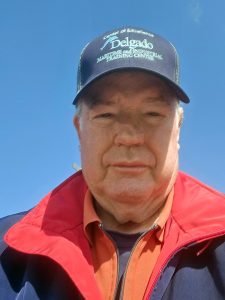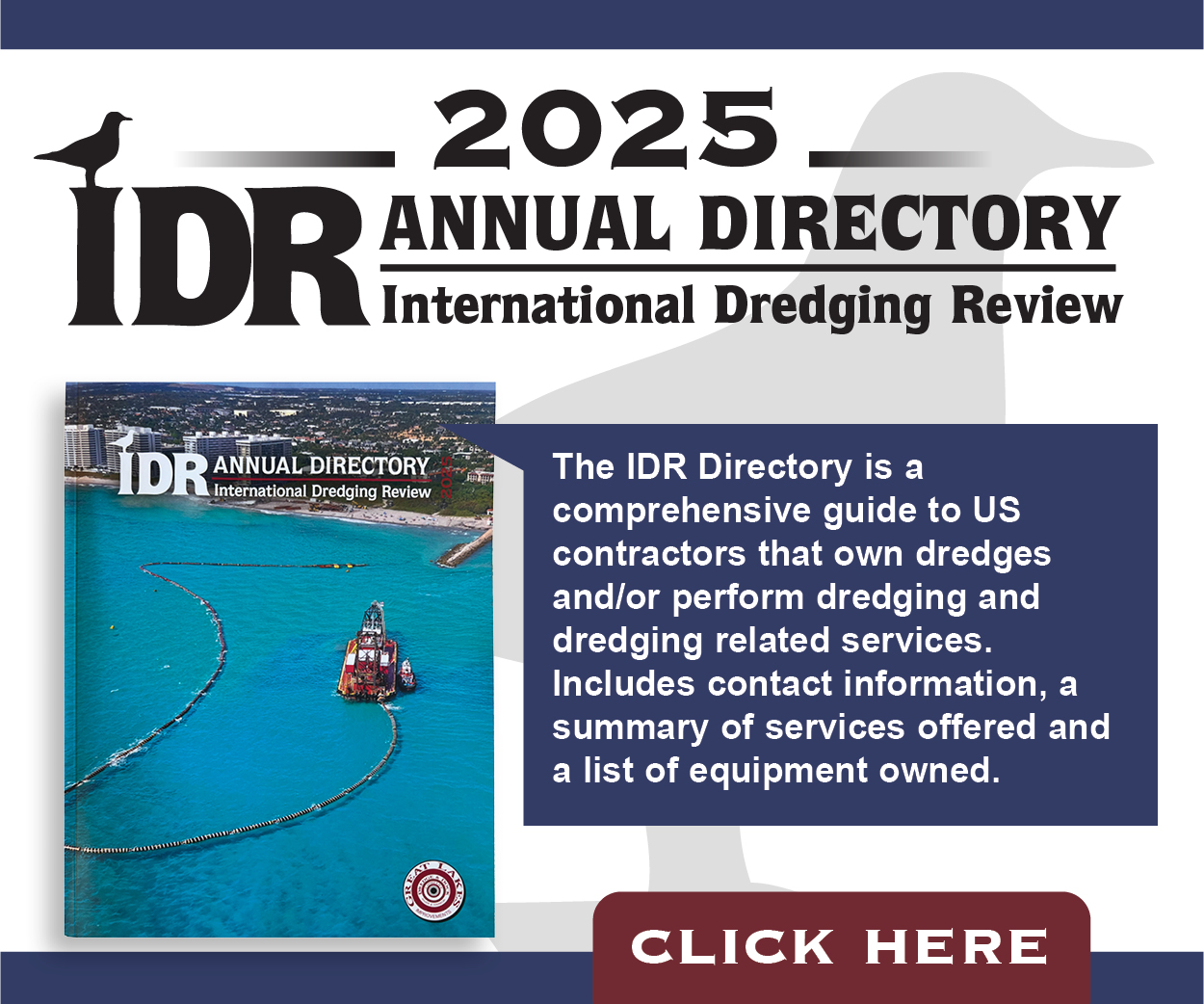Reflections: My Great Adventure In The Maritime Industry

When I got my first job on a tugboat, I didn’t consider it a career path. A well-connected acquaintance made a call and got me a job on a Nolty Theriot offshore tug. Theriot was one of the early icons of the offshore towing business. His Bayou Lafourche tugs went to the North Sea to teach British and Norwegians the offshore towing business.
I would get seasick at the beginning of each hitch and should have realized I needed to be working inshore. Still, the job was exciting, and I crewed as an ordinary seaman, eventually making a delivery trip to Trinidad on the 9,000 hp. Pye Theriot. Back in the mid-1970s, deckhands didn’t get paid much, so I would work long hitches, usually 42 days.
In time, I decided to return to college, and while there, I met a friend who worked for Tidewater Marine. During Christmas and summer breaks, he would get me a job. For a college kid, it was great having a few dollars in my pocket when I got off after the long hitches.
At Tidewater, I crewed on a delivery trip to Mexico and rode a supply boat back to the States. I enjoyed the delivery trip, and with a Berlitz book, I could “negotiate” with street vendors when we got ashore. After the trip to Mexico, I was offered a job working a political campaign and got out of the marine business for a while.
The Big City
By the late 1980s, I was selling cars but beginning to tire of that job. Then, in 1989, a neighbor had gone to New York when a strike forced the boat companies to hire Cajuns to work for what was then more money than the bayou jobs paid. The boat companies didn’t tell about the strike, and recruits wouldn’t find out until they arrived at the airport in Newark, N.J., were escorted to the basement and loaded with their gear into a van for the trip to the boats. Not a passenger van, a cargo van.
“Just toss your bags in the back and sit on them,” recruits were told. Then the driver got in with a baseball bat, and the guy riding shotgun got in with a shotgun, literally. Boats had plexiglass over the wheelhouse windows, and a “guard” would ride, armed only with a video camera.
It took a year for me to get hired. My nautical resume now boasted of two-plus years of sailboat racing Wednesday nights and Sunday afternoons, which probably explains the delay.
I was hired as a green deckhand by Spentonbush-Red Star, a wholly-owned subsidiary of Hess Oil Company. The company operated a lot of single-screw tugs moving oil barges. The nice twin-screw boats were mostly bought from Southern companies that went out of business, but the boats were well-maintained, and the company was run very well.
Only then did I began to see this as a career path. Some of the old-timers were excellent boat-handlers on single-screw boats, working into lines to maneuver boats in tight spots. They taught me a lot.
When I decided to test for my able-bodied seaman rating, I found out I was short of time. I had not kept my discharge papers from Tidewater or Theriot, and my Gulf sea time pre-dated computers. Neither of the companies would send a clerk back through the old records to find my 200 days lost.
In sharing my pain with the Coast Guard, I discovered there was a form that asked how many days a month I worked on boats, so I filled the form for eight days a month for two years. The form didn’t ask how many hours each day (it now does), so the Coast Guard awarded me a day and a half for each two-hour sailboat race. I had my 200 days back.
I worked a while on one of the nicer twin-screw boats and spent a lot of time in the wheelhouse. One of the mate’s jobs was to do chart corrections on the paper charts, and he suggested I could learn plotting if I took over the job. The mate smiled with approval when I readily agreed. Little did I know that the boat kept 40 charts, and corrections came weekly on both the Notice to Mariners and Local Notice to Mariners.
Needless to say, when I tested for my 100-ton master license, plotting came easy.
I was selected to train for the wheelhouse. It was nerve-wracking at first because I would envision all the things that could go wrong and constantly try to figure out how to keep from crashing.
Westchester Creek was a challenge, with rocks on both sides of a narrow channel and a bridge in a bend. We would push the loaded barge in stern first and tow the light barge out on gate lines—two lines off the stern of the tug with the barge only five feet astern. When we left the dock, we had barely more than a boat length and a half to get the barge out in the channel before we passed some house boats. One little girl would always come out to wave as we passed.
A natural tendency was to turn and look back to see if the barge was clearing the house boats, but in turning, there was the tendency to turn the steering stick, taking the boat out of shape in the narrow channel. The old captains would stand behind the trainee mates with a yard stick. If the mates turned, they got whacked. I discovered I could put the radar on closest range and watch the barge clear without turning.
Our on-board training captains were also Sandy Hook pilots who docked ships at Hess Oil’s refinery in Port Reading, N.J. Often they had to dock ships, and I found more and more they would leave me to steer alone.
Bridge Problems
Three hundred trains crossed the PATH (Port Authority Trans-Hudson) Bridge on the Hackensack River daily. The remotely located dispatcher had to unlock the bridge before the bridge tender could swing it open, and his job was to move trains, not barges. At times, we would wait 45 minutes for an opening.
One of the captains looked up the Hackensack River in Coast Pilot 2 and found the PATH Bridge was the only one in New York Harbor that had to open within 10 minutes of request, unless the boat and bridge tender agreed otherwise. The dispatcher had no say.
Thus, the request for opening went something like this: “PATH Bridge, this is the tug Cheyene. I am requesting my 10-minute opening under Section 117.723 of the Code of Federal Regulations. It is now 10:32. Please inform your dispatcher.” Magically, nine minutes and 45 seconds later, we got our opening. Lesson learned.
It worked well, at least until a new bridge tender showed up. He said he would not request the opening from dispatch until I made it around the bend and was sitting at the bridge. That was impossible, as the current would spin the tug and barge around if I stopped.
“You have one of two choices,” I’d tell the tender. “Since I’m committed, you can either open the bridge or get off as quickly as you can, because I have 880,000 gallons of gasoline, and it’s going to be the biggest fireball you have ever seen.”
Message received.
Shaped By Exxon Valdez and 9/11
After the Exxon Valdez incident, oil companies were getting out of the marine towing business. The company general manager told us we were being sold. The company had a great program to upgrade licenses. Just put a class on your credit card, pass the class and bring the company the certificate. We would get reimbursed before the credit card was due. I upgraded to 1,600-ton master and got an oceans certification.
I attended the 1999 Workboat Show and stopped at the Delgado Community College booth. Delgado was going to begin teaching the Coast Guard-required Bridge Resource Management class. The school representatives asked what license I held. I told them, and they hired me, apparently not hearing me mumble that the ink had not yet dried on the license. I still teach there part time, 24 years later.
Spentonbush-Red Star was sold to Hornbeck Offshore Services, a supply boat company, in June 2001. Barely three months later, 9/11 happened. On that day, I was on a larger boat with a barge loading for Port Jefferson in Long Island Sound.
The crew on my regular boat watched the second plane fly into the World Trade Center. The captain who had replaced me suffered a heart attack early the next morning and died in the hospital. Edward Bernard was the only mariner to die when commercial boats evacuated Manhattan Island after the rail and vehicle crossings were shut down.
After 9/11, the Coast Guard was given many more tasks than there were personnel. The volunteer Coast Guard Auxiliary filled many of those jobs, including riding the levees weekly between Baton Rouge, La., and Venice, La., near the mouth of the Mississippi River. I was invited to join and agreed. This was my way to fight back.
After riding the levees a few times, I wrote an article with the intent of encouraging professional mariners to join the Auxiliary. I sent it to TV stations, newspapers and trade magazines.
Someone from The Waterways Journal called the boat to ask what I did on board. “I drive the boat and toot the whistle,” I replied. That first article grew into part-time writing, and I’ve been doing that for 20 years now.
In 2009, my small tug boat was sold, but because I had upgraded my license, Hornbeck was able to move me to the larger supply boats. My first job was to fly to Trinidad and bring the HOS Dakota back to Pot Fourchon, La. The regular captain did not have the oceans certification, and although my tug did not even have auto pilot, my license said I could operate a DP-2 tug. I rode as mate, but my license made the voyage legal.
It was a steep learning curve for me, operating dynamic positioning supply boats with bow thrusters and stern thrusters, but Hornbeck was patient. In 2015, when the oil price crunch hit, Hornbeck had to cut back to survive. I was laid off, along with 130 others, in the second round on October 30.
Because I had the TOAR (Towing Officer Assessment Record), I could slide back to tugs. My last five years, I worked as a captain for E.N. Bisso on harbor tugs before retiring.
What’s the moral of the story? Get all the paperwork you can, because you never know what you’ll need, and never give it up.



